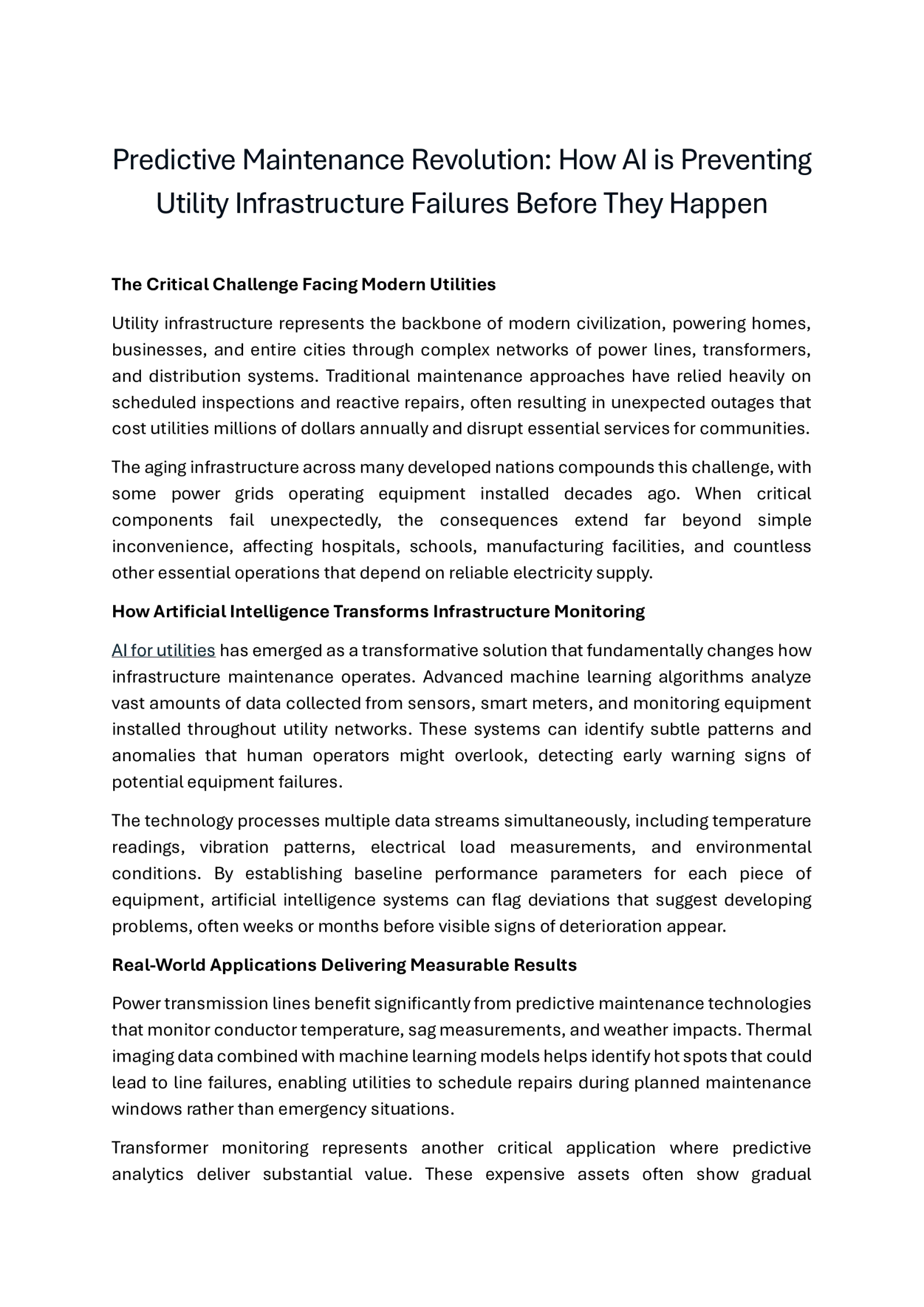Predictive Maintenance Revolution: How AI is Preventing Utility Infrastructure Failures Before They Happen The Critical Challenge Facing Modern Utilities Utility infrastructure represents the backbone of modern civilization, powering homes, businesses, and entire cities through complex networks of power lines, transformers, and distribution systems. Traditional maintenance approaches have relied heavily on scheduled inspections and reactive repairs, often resulting in unexpected outages that cost utilities millions of dollars annually and disrupt essential services for communities. The aging infrastructure across many developed nations compounds this challenge, with some power grids operating equipment installed decades ago. When critical components fail unexpectedly, the consequences extend far beyond simple inconvenience, affecting hospitals, schools, manufacturing facilities, and countless other essential operations that depend on reliable electricity supply. How Artificial Intelligence Transforms Infrastructure Monitoring AI for utilities has emerged as a transformative solution that fundamentally changes how infrastructure maintenance operates. Advanced machine learning algorithms analyze vast amounts of data collected from sensors, smart meters, and monitoring equipment installed throughout utility networks. These systems can identify subtle patterns and anomalies that human operators might overlook, detecting early warning signs of potential equipment failures. The technology processes multiple data streams simultaneously, including temperature readings, vibration patterns, electrical load measurements, and environmental conditions. By establishing baseline performance parameters for each piece of equipment, artificial intelligence systems can flag deviations that suggest developing problems, often weeks or months before visible signs of deterioration appear. Real-World Applications Delivering Measurable Results Power transmission lines benefit significantly from predictive maintenance technologies that monitor conductor temperature, sag measurements, and weather impacts. Thermal imaging data combined with machine learning models helps identify hot spots that could lead to line failures, enabling utilities to schedule repairs during planned maintenance windows rather than emergency situations. Transformer monitoring represents another critical application where predictive analytics deliver substantial value. These expensive assets often show gradual

